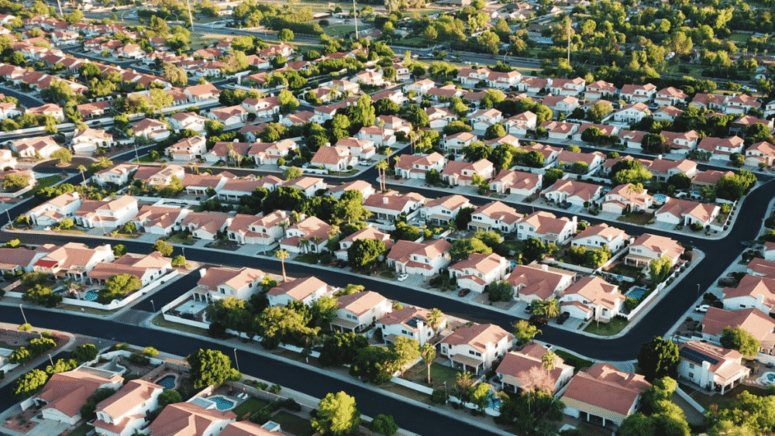Why Are HOA Fees So High? A Homebuyers Guide
- Published on
- 8 min read
-
 Richard Haddad Executive EditorClose
Richard Haddad Executive EditorClose Richard Haddad Executive Editor
Richard Haddad Executive EditorRichard Haddad is the executive editor of HomeLight.com. He works with an experienced content team that oversees the company’s blog featuring in-depth articles about the home buying and selling process, homeownership news, home care and design tips, and related real estate trends. Previously, he served as an editor and content producer for World Company, Gannett, and Western News & Info, where he also served as news director and director of internet operations.
Homeowners often harbor a love-hate relationship with HOAs (Homeowners Associations). You may have conflicting emotions about buying a house that’s part of a managed community, or perhaps you’re questioning a recent increase in your HOA dues. As you investigate costs, you may be asking, “Why are HOA fees so High?” or “How do my local HOA payments compare to other neighborhoods?”
In this guide, we’ll break down HOA fees and facts, and why they can sometimes feel surprisingly high. We’ll also share which states have the highest fees and offer insights to help you decide if living in an HOA community is the best choice for your lifestyle.
What are HOA fees?
Homeowners Association (HOA) fees are monthly or annual charges that property owners in certain communities must pay. These fees are collected by the HOA to cover the costs of maintaining and improving shared spaces and amenities within the community. Whether you’re eyeing a condo, a townhouse, or a single-family home within a managed neighborhood, it’s important to include any required HOA fees in your monthly financial equation.
What are HOA fees used for?
HOA fees go toward a variety of expenses that benefit the community as a whole. Here’s a quick breakdown:
- Maintenance of common areas: This includes landscaping, parks, playgrounds, and swimming pools. Regular upkeep ensures these spaces remain clean, safe, and enjoyable for all residents.
- Repairs and renovations: Over time, shared facilities like clubhouses, gyms, and community gates need repairs or updates. Your HOA fees fund these projects.
- Utilities for common areas: Electricity, water, and trash services for shared spaces are covered by HOA fees, keeping communal areas operational.
- Insurance: HOA fees often contribute to the insurance needed for common areas, protecting against damage or liability.
- Reserve funds: A portion of HOA fees is typically set aside for future expenses, such as major repairs or emergency needs, ensuring the community is prepared for unforeseen events.
How much are average HOA fees?
According to a study conducted by Today’s Homeowner using data from the Foundation for Community Association Research, the average monthly HOA fee in the U.S. is $390, or about $4,700 annually. In most states (43 out of 50), the monthly HOA fee ranges from $300 to $400.
The data collected also identified disparities and geographic trends in HOAs. For example, the study found that in Missouri, HOA residents pay an average fee of $469, while in Wisconsin, a homeowner pays an average of only $277.
HOA fees can vary widely depending on a number of factors:
- Level of amenities and services provided
- Cost of living in the region
- Cost of homes in the region
- State and local laws
- Inflation impact due to rising costs of materials and repairs
Researchers also compared HOA fees to median home values to identify where HOA fees are disproportionately high. Here are two interesting findings they released:
- West Virginia: $4,700 average annual HOA fee (median home value is $143,200)
- Mississippi: $4,750 average annual HOA fee (median home value is $145,600)
For these two states, the average annual HOA fee exceeds 3% of the median home values.
Why are HOA fees so high?
One of the primary reasons HOA fees might feel high or are on the rise is inflation. The increasing costs of services, labor, and materials place HOAs in a challenging position, often leading them to make tough choices between hiking up assessments or cutting back on services and maintenance. In today’s economic climate, many HOA boards find themselves doing a bit of both to manage their budgets effectively.
Inflation affects several key areas that directly impact HOA fees:
- Repair and replacement expenses: The cost of maintaining and upgrading community facilities and infrastructure can escalate, necessitating higher contributions from residents.
- Labor and wage increases: As wages grow to match the cost of living, the expense of hiring staff for maintenance, security, and administration goes up.
- Purchase of materials: The cost of materials for repairs or upgrades to communal areas and buildings can increase significantly.
- Required vendor contracts: Contracts with third-party vendors for services like landscaping, trash removal, and maintenance may become more expensive.
- Insurance premiums: The cost of insuring common areas and buildings against damage and liability can rise.
- Taxes: Property taxes and other levies that the HOA must pay can increase, adding to the financial burden.
- Utilities: Charges for electricity, gas, water, and sewage services for common areas can go up.
These rising costs can also lead to the depletion of reserve funds, which are set aside for covering future expenses, repairs, replacements, scheduled upgrades, and unexpected financial obligations. Maintaining a well-funded reserve is vital for the long-term health and sustainability of an HOA community, but it can be challenging in a high-inflation environment. As a result, HOA fees may need to increase to ensure the reserve fund remains adequately capitalized.
HOA fees can increase after costly events
Unexpected events such as natural disasters, severe weather incidents, or significant maintenance emergencies can lead to sudden and substantial expenses for a homeowners association. When communities face such unforeseen challenges, the financial strain can be immense, especially if the reserve funds are not fully equipped to cover the costs. As a result, HOA fees may need to be increased temporarily or permanently to rebuild the reserve funds and address the immediate need for repairs and reconstruction.
Which states have the highest HOA fees?
The states with the highest HOA fees are Missouri, Arizona, Oregon, Colorado, and Maryland. The table below shows the breakdown of the HOA fees in these states.
5 states with the highest HOA fees
| State | Avg. monthly fee | # of HOA homes | Total paid |
| 1. Missouri | $469 | 311K | $1.8 billion |
| 2. Arizona | $448 | 875K | $4.7 billion |
| 3. Oregon | $402 | 228K | $1.1 billion |
| 4. Colorado | $401 | 893K | $4.3 billion |
| 5. Maryland | $401 | 395K | $1.9 billion |
Source: Today’s Homeowner
The Today’s Homeowner study found that HOA homes are generally valued at least 4% higher than non-HOA homes. You can check the average HOA fees in your state using the interactive map below.
Which states have the most HOA homes?
The states with the highest percentage of homes that are part of an HOA community are Florida, Colorado, California, Washington, and Arizona. The table below shows the breakdown of the HOA volume in these states.
5 states with the highest percentage of HOA homes
| State | % of HOA homes | # of HOA homes | Total homes |
| 1. Florida | 45% | 3.9 million | 8.6 million |
| 2. Colorado | 38.6% | 839K | 2.3 million |
| 3. California | 36.8% | 4.9 million | 13.4 million |
| 4. Washington | 31.2% | 944K | 3 million |
| 5. Arizona | 31.1% | 875K | 2.8 million |
Source: Today’s Homeowner
The study found that nationally, about 22% of homes are part of an HOA community. You can check the percentage of HOA homes in your state using the interactive map below.
Fewer HOAs in the South
The four states with the lowest percentage of HOA homes (5% or less) are all concentrated in the South.
- Alabama 5.0%
- Oklahoma 4.1%
- Mississippi 2.5%
- Arkansas 2.2%
Are high HOA fees frightening homeowners away?
As homeownership evolves, the role and appeal of HOAs are under scrutiny, especially when it comes to the impact of rising monthly fees. But even with fee increases, data from the Foundation for Community Association Research indicates a nearly 13% increase in HOA communities over the past decade, from 317,200 to 358,000.
The number of HOA homes also grew by a significant margin, increasing 9.06% from 2011 to 2021. More recent figures estimate that 27.7 million homeowners participate in HOAs throughout the country.
This continued growth suggests that, despite concerns about high fees, HOAs are not deterring a significant number of potential homeowners. It appears that these associations continue to play a significant role in the American housing landscape.
Is a homeowners association a good choice for me?
HOA communities offer numerous benefits, such as access to amenities, maintenance of common areas, and potentially higher property values due to consistent community standards. However, these come with the obligation of adhering to community rules and paying HOA fees, which can be a significant consideration.
Before making your decision, consider the lifestyle you’re looking for, your budget for HOA fees, and your willingness to comply with the community’s covenants, conditions, and restrictions (CC&Rs). If the benefits align with your priorities and lifestyle, an HOA community might be a great fit for you.
If you’re unsure or need expert advice, HomeLight can connect you with top real estate agents in your area who are familiar with local HOAs. These agents have the experience and knowledge to guide you through the process, helping you find a home that meets your needs, budget, and preferences.
Header Image Source: (Avi Waxman / Unsplash)
- "Are High HOA Fees Scaring Homeowners Away?," Today's Homeowner, Stephanie Horan (November 2023)
- "Inflation defined: What is it, what causes it, and what is hyperinflation?," USA Today, James Powell (March 2024)
- "What Are Covenants, Conditions And Restrictions (CC&Rs) In An HOA?," Forbes, Casey Bond (February 2021)




